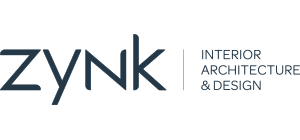
The pandemic has meant that the health and fitness industry has had to adapt significantly in the past year. Gyms have had to find ways to provide alternative workout options from home that still offer an engaging, enjoyable experience for their customers, which is no easy feat.
And with many gyms having to close during lockdowns, it is now more important than ever for them to attract new customers and keep existing ones. Therefore, designing your gym space in a way that considers both how it will work functionally and what kind of customer experience it will provide, is key. After all, you want your gym to stand out from the crowd and leave a lasting impression on your members.
But designing a gym facility is more than just filling a room with equipment and hoping for the best.
Below, we’ve listed the 5 key things to consider when designing your gym and why they are important.
Key things to consider when designing your gym
1. Know your proposition
Understanding why your customer needs to use your gym, and what the benefits of them using it are, is essential for the gym’s success. How does your business fill your target market’s needs? Is it better than what else is out there in the current market? And how are you going to show the benefits of your facility?
A simple way to understand your proposition is to ask yourself:
- What is my customer’s key problem?
- What are the benefits my facility would offer?
- What makes those benefits valuable to my customer?
- How am I going to differentiate myself from my competitors?
Understanding your proposition inside out will allow you to create a niche facility that will speak to your specific audience. It’s important to not try to be everything to everyone. This will only dilute your offer and potentially leave your customers feeling confused.
2. Understand your market
Understanding who you are designing for is key to a successful gym design. Who is your target market? What would they find attractive and useful in a gym facility? Who are they? What are their daily habits and routines? How can you ensure that your design speaks to what they are looking for? What are your competitors doing to attract their ideal customers?
When you understand your market and ideal customer, you can speak to them through your design, which means you will attract the right people and stand a higher chance of keeping them too.
Understanding your target market also allows you to adapt and change if the demands of your audience change over time.
3. Consider the practicality of your space
It is important to consider your space when designing your gym. Do you have enough space to facilitate the design of your gym? Will it work practically and functionally? What is your customer’s experience like? Is your space member-centric?
Sometimes, it is better to use less equipment and have more space. Customers stay at a gym not because of equipment but because of the results they achieve.
It’s also important that you’ve designed a clear journey through your gym. A clearly laid out gym with designated zones gives your members a sense of purpose and accountability.
4. Incorporate dynamic lighting
Dynamic lighting is digitally controlled and responsive lighting that’s able to reflect the natural progression of daylight over the course of the day with changes in both colour and intensity.
Dynamic lighting is important because it has a motivational effect and a positive impact on your members’ experience, creating a feeling of inclusivity. It also helps give your members a fully immersive experience when working out.
During our years of experience fitting dynamic lighting, one thing that’s key to consider is the simplicity of the lights’ control system.
Way too often have we seen lighting being installed in gyms that look great, but because the control system is too complex to operate, it doesn’t get used to its full potential.
5. Consider functionality vs aesthetics
When thinking about how you want your gym to look, it is important to consider how it will work functionally.
Ask yourself these questions:
- How easy is it for your members to navigate through the space?
- Do you have designated workout areas to improve accountability for your members?
- Are you making use of space-saving equipment?
- Have you left enough free space in your gym?
You can have an impressively designed gym, but whether it will work operatively for your business is a different matter. You need to consider how your members will feel and work out in your space, and how easy it is for your staff to work in the space.
This is particularly important when it comes to the acoustics of your space, especially if you are running classes with music. There is a fine balance between creating an aesthetically pleasing design and a design that works practically for years to come.
zynk Design: luxury health and wellbeing design
Starting and running a successful gym takes a lot of time, money and effort – and there is no better way to ensure success than by working with professional gym designers and interior architects. The pandemic has meant that the health and fitness industry has had to adapt significantly in the past year. Gyms have had to find ways to provide alternative workout options from home that still offer an engaging, enjoyable experience for their customers, which is no easy feat.
Professionals in the gym design space will be able to help with space planning, interior concept design, lighting design specifications, furniture and equipment specifications, planning applications and much more.
Here at zynk Design, we’re experts in gym design and interior architecture and have over two decades of experience in the health, wellness and fitness industry. We offer interior architecture, graphic design and fitness operation consultancy services to ensure thorough support through every stage of a project – from concept to execution.
For more information, have a look at some of our previous health and fitness designs. You can also sign up for our newsletter for regular wellness design updates below.



